Yes, I am a physicist and hence I do not believe. But because I do not believe, I must experiment and measure. Gustav Weiß has published an article in the internet about the use of Efficient Micro Organisms (EM) to avoid re-oxidation of metals in a melted glazes under silicium induced intrinsic reduction. The EMs can resist extreme conditions and block the discharge of oxygene from silicium back to the metals within reduced glazes.
EMs are available in principle only from one manufacturer in Japan, all international EM dealers buy from there. According to their brochure, EMs clean, soften water, influence the fine energetic resonances, store positive information and transfer then to your body. EM is available as a ceramic powder and as liquids. I bought an EM concentrate that can be cultured and propagated. This liquid is said to have the highest amount of EMs . The price is remarkable, nevertheless I took four times the recommended amount, as Mr. Weiß gave no information about his starting material.
The EMs a smelling pleasantly and like good compost and do not really remind on hot lava and subterranean boiling sulfur springs.
The experiment has again been performed with the 1220°C transparent glaze, added to the metal oxides, the silicium and the EMs from the bottle.
The firing conditions were identical to the experiment with inner reduction (in fact it was the same firing).
Iron Oxide
Picture 1: Pure (left), with silicium (middle) and with silicium plus EM (right)
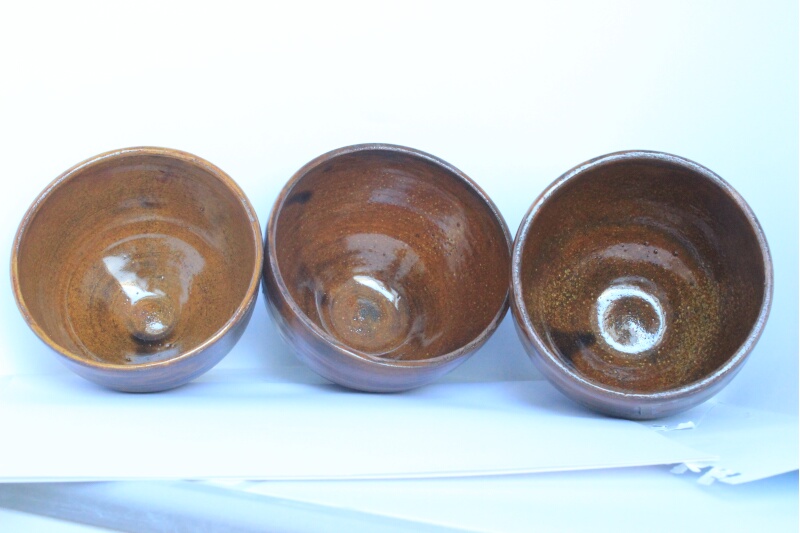
Picture 2: Iron oxide with silicium addition and EM in an electrical kiln (left) and reduction-fired in a sagger (right)
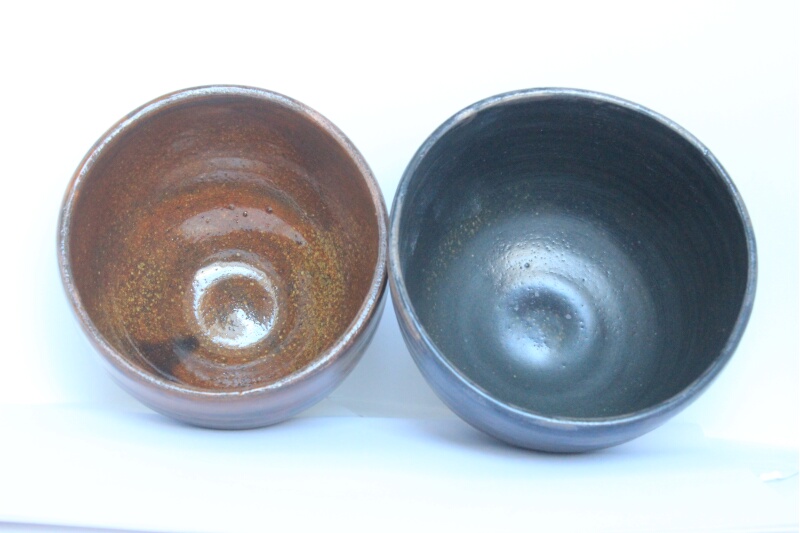
Copper Oxide
Picture 3: Pure (left), with silicium (middle) and with silicium plus EM (right)

Picture 4: Copper oxide with silicium addition and EM in an electrical kiln (left) and reduction-fired in a sagger (right)
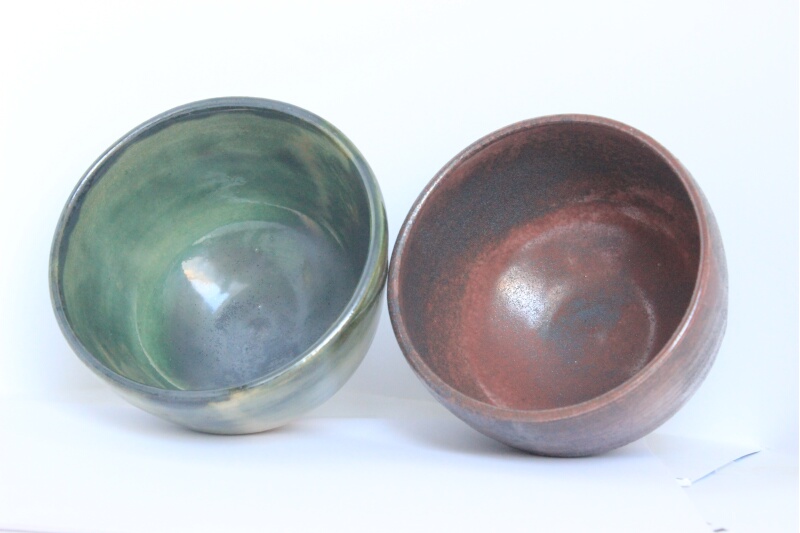
Titanium Oxid
Picture 5: Pure (left), with silicium (middle) and with silicium plus EM (right)
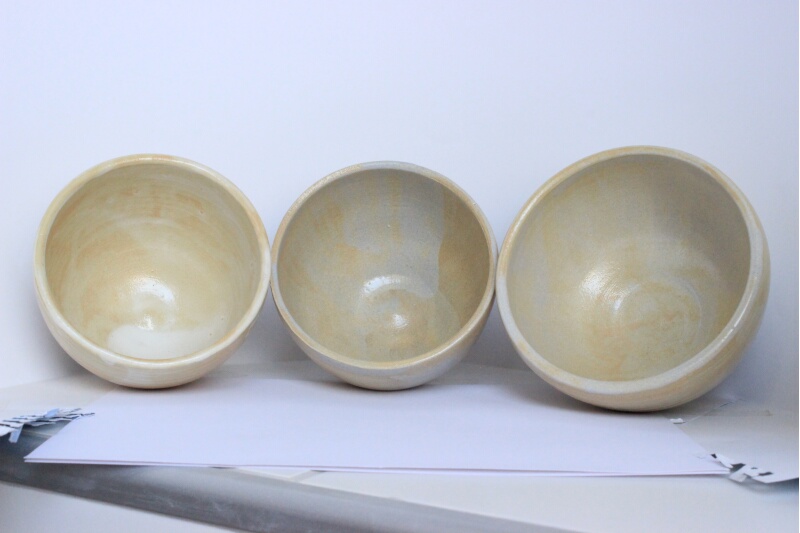
Picture 6: Titanium oxide with silicium addition and EM in an electrical kiln (left) and reduction-fired in a sagger (right)
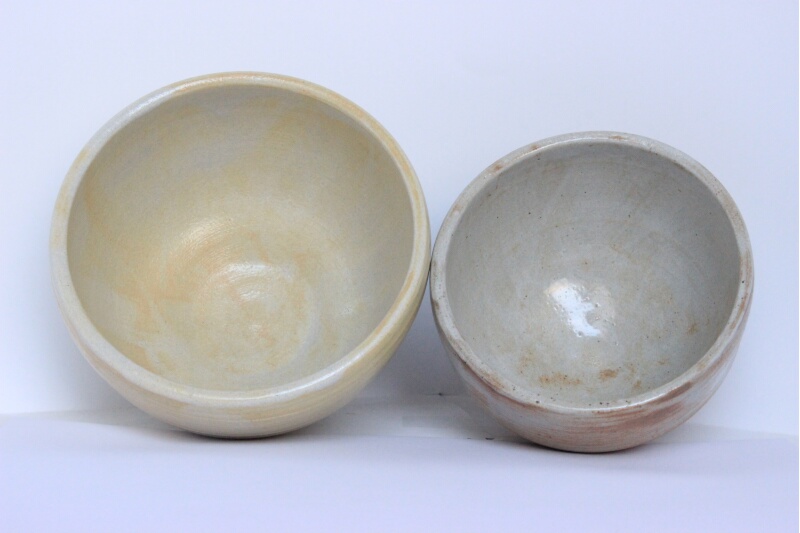
As you can see, you can see nothing.
In the electrical kiln the samples with and without EM look identical, in the sagger the same.
What are my conclusions?
1) The addition of such an amount of EM, that is economically not even reasonable, does not create visible effects.
2) The esoteric promises of the EM industry support my preconception. If EM would be so fantasticly influencing our lives, why did nature not considere them as part of our building plan?
3) Some polemic: it is rather clever of the EMs to know, whom to give and take the oxygene. Or if they take the oxygene themselves, why would I need to add silicium at all to the glazes?
4) As a physicist I will continue to not believe in EMs also in the future and take the described magic effects as fantasy. As a potter I have to say, that if people have made good experience with EM and the water from EM ceramics tastes better, I will of course also build EM ceramics on request. But only for money in advance and without the right for withdrawal because on non-working EM effects.
Related posts:
Because of my bonsai pots I am always looking for a red stoneware clay that is frost resistant and h...
A fantastic glaze in principle, but it is not easy to get reproducible results. According to literat...
The wood firing in may 2018 was spectacular. The weather was perfect and we fired 2 kilns. Some impr...
